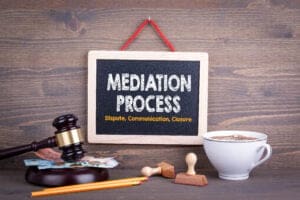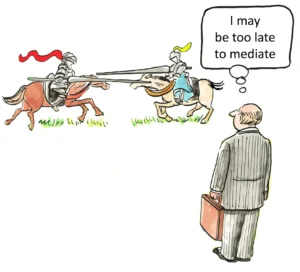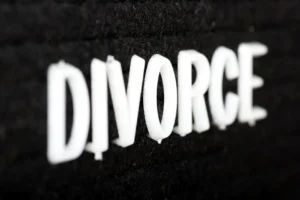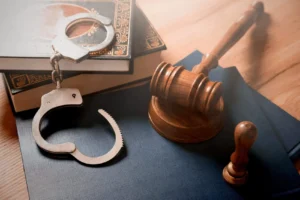Exclusionary Rule: Keeping Illegal Evidence Out of Court
The exclusionary rule stands as a cornerstone of American criminal procedure, serving as a powerful deterrent against unconstitutional searches and seizures by law enforcement. This judicial doctrine, which prohibits the use of illegally obtained evidence in criminal trials, has profoundly shaped the landscape of criminal justice in the United States. The rule’s primary purpose is to safeguard the constitutional rights of individuals, particularly those protected by the Fourth Amendment, by providing a remedy for violations and discouraging police misconduct.
At its core, the exclusionary rule operates on a simple premise: evidence obtained in violation of a defendant’s constitutional rights cannot be used against them in court. This principle, while straightforward in theory, has given rise to a complex body of jurisprudence as courts have grappled with its application in various contexts. The rule’s scope extends beyond the direct products of illegal searches and seizures to encompass derivative evidence under the fruit of the poisonous tree doctrine, which holds that evidence indirectly obtained through illegal means is also tainted and subject to exclusion.
The origins of the exclusionary rule can be traced back to the landmark Supreme Court decision in Weeks v. United States (1914), which established the rule in federal courts. However, it was not until the seminal case of Mapp v. Ohio (1961) that the Court extended the rule’s application to state courts through the process of selective incorporation. This decision marked a watershed moment in American criminal procedure, fundamentally altering the relationship between federal constitutional protections and state criminal justice systems.
The implementation of the exclusionary rule has far-reaching implications for law enforcement practices and criminal prosecutions. By creating a significant disincentive for police misconduct, the rule encourages law enforcement agencies to invest in proper training and to develop protocols that ensure compliance with constitutional requirements. This, in turn, promotes greater respect for individual rights and enhances the integrity of the criminal justice system as a whole.
However, the exclusionary rule is not without its critics. Detractors argue that the rule can lead to the release of guilty defendants on what they perceive as technicalities, potentially undermining public safety and eroding confidence in the justice system. These concerns have led to the development of several exceptions to the rule, designed to balance the interests of justice with the need to deter police misconduct.
One of the most significant exceptions to the exclusionary rule is the good faith exception, established by the Supreme Court in United States v. Leon (1984). This exception allows for the admission of evidence obtained by officers acting in reasonable reliance on a search warrant that is later found to be invalid. The rationale behind this exception is that excluding evidence in such cases would not serve the rule’s deterrent purpose, as the officers believed they were acting lawfully at the time of the search.
The good faith exception has been expanded in subsequent cases to cover other situations where officers act in objectively reasonable reliance on seemingly valid authority. For instance, in Arizona v. Evans (1995), the Court held that evidence obtained during an arrest based on an erroneous computer record of an outstanding warrant should not be suppressed if the error was made by court employees rather than law enforcement personnel.
Another important exception to the exclusionary rule is the inevitable discovery doctrine, articulated in Nix v. Williams (1984). This doctrine allows for the admission of illegally obtained evidence if the prosecution can demonstrate that the evidence would have been discovered through lawful means regardless of the constitutional violation. This exception seeks to put the police in the same position they would have been in had no misconduct occurred, rather than in a worse position.
The attenuation doctrine represents yet another limitation on the exclusionary rule. This principle, developed in cases such as Wong Sun v. United States (1963), holds that evidence may be admissible if the connection between the illegal police conduct and the discovery of the evidence is sufficiently attenuated to dissipate the taint of the initial violation. Factors considered in this analysis include the temporal proximity between the illegal act and the discovery of evidence, the presence of intervening circumstances, and the flagrancy of the official misconduct.
The application of the exclusionary rule in the context of Miranda violations has also been subject to significant judicial scrutiny. While statements obtained in violation of Miranda warnings are generally inadmissible in the prosecution’s case-in-chief, the Supreme Court has carved out exceptions allowing such statements to be used for impeachment purposes or to locate physical evidence. These exceptions, established in cases like Harris v. New York (1971) and Michigan v. Tucker (1974), reflect the Court’s ongoing efforts to balance the deterrent effect of the exclusionary rule against the truth-seeking function of criminal trials.
In recent years, the Supreme Court has shown a tendency to narrow the scope of the exclusionary rule, often emphasizing a cost-benefit analysis that weighs the deterrent benefits of exclusion against its social costs. This approach is exemplified in cases such as Hudson v. Michigan (2006), where the Court declined to apply the exclusionary rule to violations of the knock-and-announce rule, and Herring v. United States (2009), which limited the rule’s application to cases of deliberate, reckless, or grossly negligent police misconduct.
The ongoing debate surrounding the exclusionary rule reflects broader tensions in American criminal justice between the protection of individual rights and the pursuit of effective law enforcement. Proponents of the rule argue that it serves as a vital check on police power and ensures that constitutional protections have real meaning in practice. They contend that alternative remedies, such as civil lawsuits or internal disciplinary measures, are insufficient to deter police misconduct effectively.
Critics of the exclusionary rule, on the other hand, argue that it imposes too high a cost on society by allowing potentially dangerous criminals to go free due to what they view as technical violations of procedural rules. They advocate for alternative approaches, such as administrative sanctions or enhanced civil remedies, to address police misconduct without compromising public safety.
The exclusionary rule also intersects with important questions of judicial integrity and the proper role of courts in supervising law enforcement activities. Some scholars argue that the rule serves not only as a deterrent but also as a means of preserving the integrity of the judicial process by preventing courts from becoming complicit in constitutional violations. This perspective emphasizes the symbolic importance of the rule in upholding the rule of law and maintaining public confidence in the justice system.
The application of the exclusionary rule in the digital age presents new challenges and complexities. As law enforcement increasingly relies on advanced technologies for surveillance and evidence gathering, courts must grapple with how to apply Fourth Amendment principles to novel contexts. Issues such as the use of GPS tracking devices, cell site location information, and digital searches of electronic devices have all raised questions about the proper scope of the exclusionary rule in an era of rapidly evolving technology.
The intersection of the exclusionary rule with national security concerns has also become a significant area of legal and policy debate. In cases involving terrorism or other threats to national security, courts have sometimes been more willing to carve out exceptions to the exclusionary rule or to apply it less stringently. This trend reflects the ongoing challenge of balancing individual rights with collective security interests in an age of global threats.
The exclusionary rule also plays a crucial role in shaping police training and departmental policies. Law enforcement agencies have developed extensive protocols and training programs designed to ensure compliance with Fourth Amendment requirements and to minimize the risk of evidence suppression. This institutional response to the exclusionary rule demonstrates its indirect effects on police behavior and organizational culture.
In the context of plea bargaining, which resolves the vast majority of criminal cases in the United States, the exclusionary rule can have significant strategic implications. The possibility of evidence suppression often provides leverage for defendants in negotiations with prosecutors, potentially leading to more favorable plea deals or even case dismissals. This dynamic underscores the rule’s practical impact on case outcomes beyond its application in formal trials.
The exclusionary rule also intersects with issues of racial justice and equitable enforcement of the law. Critics argue that the rule’s protections are not equally available to all segments of society, pointing to disparities in police practices and the application of exceptions to the rule. This perspective highlights the broader challenges of ensuring that constitutional protections are meaningfully enforced across diverse communities.
The rule’s application in administrative and civil proceedings presents another area of ongoing legal development. While the exclusionary rule was originally conceived in the context of criminal trials, courts have grappled with whether and how to apply it in other legal contexts, such as immigration proceedings or civil forfeiture cases. These decisions reflect the broader debate about the proper scope and purpose of the exclusionary rule beyond its original criminal law context.
The exclusionary rule also raises important questions about the relationship between state and federal courts in the American legal system. While Mapp v. Ohio mandated the application of the exclusionary rule in state courts, some states have interpreted their own constitutions to provide greater protections against unreasonable searches and seizures than those afforded by the federal Constitution. This dynamic creates a complex interplay between state and federal jurisprudence in the application of the exclusionary rule.
The rule’s impact on police-community relations is another significant consideration. Proponents argue that by holding law enforcement accountable for constitutional violations, the exclusionary rule helps to build trust between police and the communities they serve. Critics, however, contend that the rule can create adversarial relationships and hinder effective law enforcement, particularly in high-crime areas.
The exclusionary rule also intersects with debates about judicial activism and the proper role of courts in shaping public policy. Critics of the rule often characterize it as an example of judicial overreach, arguing that courts have exceeded their constitutional authority by creating a remedy not explicitly provided for in the text of the Constitution. Supporters, conversely, view the rule as a necessary and appropriate exercise of judicial power to give practical effect to constitutional guarantees.
The application of the exclusionary rule in cases involving consent searches presents unique challenges. Courts must often grapple with complex factual scenarios to determine whether consent was voluntarily given and whether any prior illegality tainted the subsequent consent. This area of law highlights the nuanced analysis required in applying the exclusionary rule to real-world situations.
The exclusionary rule’s interaction with statutes of limitations and speedy trial requirements adds another layer of complexity to its application. In some cases, the suppression of evidence may lead to delays that implicate a defendant’s right to a speedy trial or push a case beyond the applicable statute of limitations. These scenarios require courts to balance competing constitutional and procedural considerations.
The rule’s application in cases involving multiple defendants can also raise challenging legal questions. Courts must determine how to handle situations where evidence obtained in violation of one defendant’s rights may be admissible against a co-defendant. This issue highlights the individualized nature of Fourth Amendment protections and the complexities of applying the exclusionary rule in complex, multi-party cases.
The exclusionary rule also plays a role in shaping international law enforcement cooperation. As criminal activities increasingly cross national borders, questions arise about how to apply the rule to evidence obtained by foreign law enforcement agencies operating under different legal standards. This issue reflects the broader challenges of harmonizing criminal procedure across different legal systems in an era of globalized law enforcement.
In conclusion, the exclusionary rule remains a cornerstone of American criminal procedure, serving as a powerful mechanism for enforcing constitutional protections against unreasonable searches and seizures. While its application has evolved over time through judicial interpretation and the development of various exceptions, the rule continues to play a vital role in shaping law enforcement practices and safeguarding individual rights. As the legal system confronts new challenges posed by technological advancements and changing societal needs, the exclusionary rule will undoubtedly continue to be a subject of intense legal and policy debate, reflecting the ongoing tension between individual liberty and collective security in a democratic society.
Website citations used for this article:
- https://www.law.cornell.edu/wex/exclusionary_rule
- https://www.nolo.com/legal-encyclopedia/what-the-exclusionary-rule.html
- https://study.com/learn/lesson/inevitable-discovery-rule-doctrine-exception.html
- https://www.law.cornell.edu/wex/good_faith_exception_to_exclusionary_rule
- https://thedefenders.net/blogs/exclusionary-rule/
- https://www.findlaw.com/criminal/criminal-rights/the-fourth-amendment-and-the-exclusionary-rule.html


















